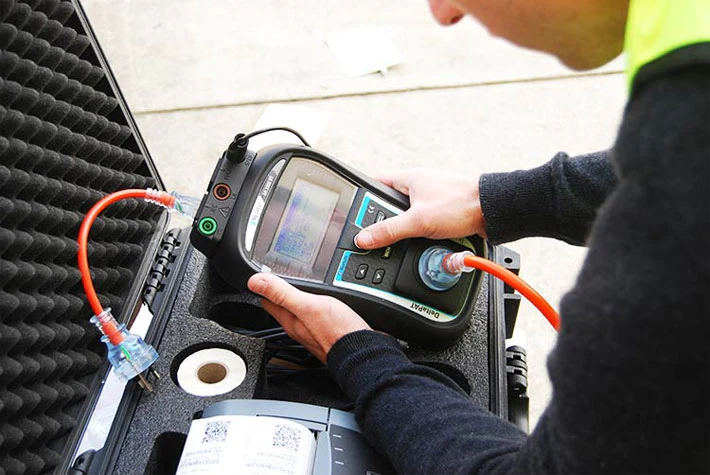
Our testing & tagging system is designed to deliver clients with an Integrated Management solution that easily meets their required electrical safety compliance standards.
Ways in which EDZ Electrical do this is:
EDZ Electrical has invested in State-Of-The-Art Testing and Tagging equipment which uses a computerised reporting & data management systems to replace the outdated manual “mega” testing and manual reporting for appliance testing.
Our systems are accurate, provide compliant reporting and create secure online databases which can be utilised to manage and maintain your systems. Other benefits of testing and tagging your portable equipment includes:
Regulation requires employers to ensure that a system is in place to regularly inspect, test and maintain electrical equipment. This does not mean every item of plug-in type electrical equipment used at the workplace must be tested and tagged. In some situations, electrical equipment does not present a risk to the operator.
Electrical equipment which needs to be tested includes anything which is used in a situation that poses a risk to the operator due to the nature of its location and the type of use.
If a risk assessment shows there is a risk to employees and others, the employer should ensure the equipment is inspected, tested and tagged in accordance with the recommendations of the Electrical Safety Guidelines.
Workcover recognises that, because of the low level of associated risk with the equipment above, the equipment may not require a rigorous, testing and tagging procedure.
A risk assessment should be carried out by a ‘competent person’ in accordance with the risk management and consultation provisions of the Regulation. This risk assessment will determine whether the electrical equipment requires testing and tagging as recommended by the Electrical Safety Guidelines.
Specified electrical equipment and safety switches require testing at intervals relevant to the class of work they are to be used for.
For class 1 work, the pre-requests for testing are found in AS/NZS 3012 – Electrical installations – Construction and Demolition Sites.
For Class 2, 3 and 4 works, the information is contained in the Electrical Safety Regulation 2002. At the completion of any tests, specified electrical equipment must have a waterproof tag attached at the time of inspection and testing, showing the date by which the equipment is to be re-inspected and retested.
Electrical equipment which has been serviced or repaired for elements which could have effected electrical safety must be inspected, tested and tagged in accordance with the requirements of the Electrical Safety Guidelines prior to the equipment being placed back into service.
All electrical inspection and testing tasks require a degree of technical expertise and interpretation of results which can only be carried out by appropriately qualified personnel.
The person authorising the inspection and testing program must obtain advice from a qualified tradesperson such as an electrician or an electrical contractor.
At EDZ Electrical we only employ qualified electrical/fitter mechanics specially trained within this field to carry out these services.